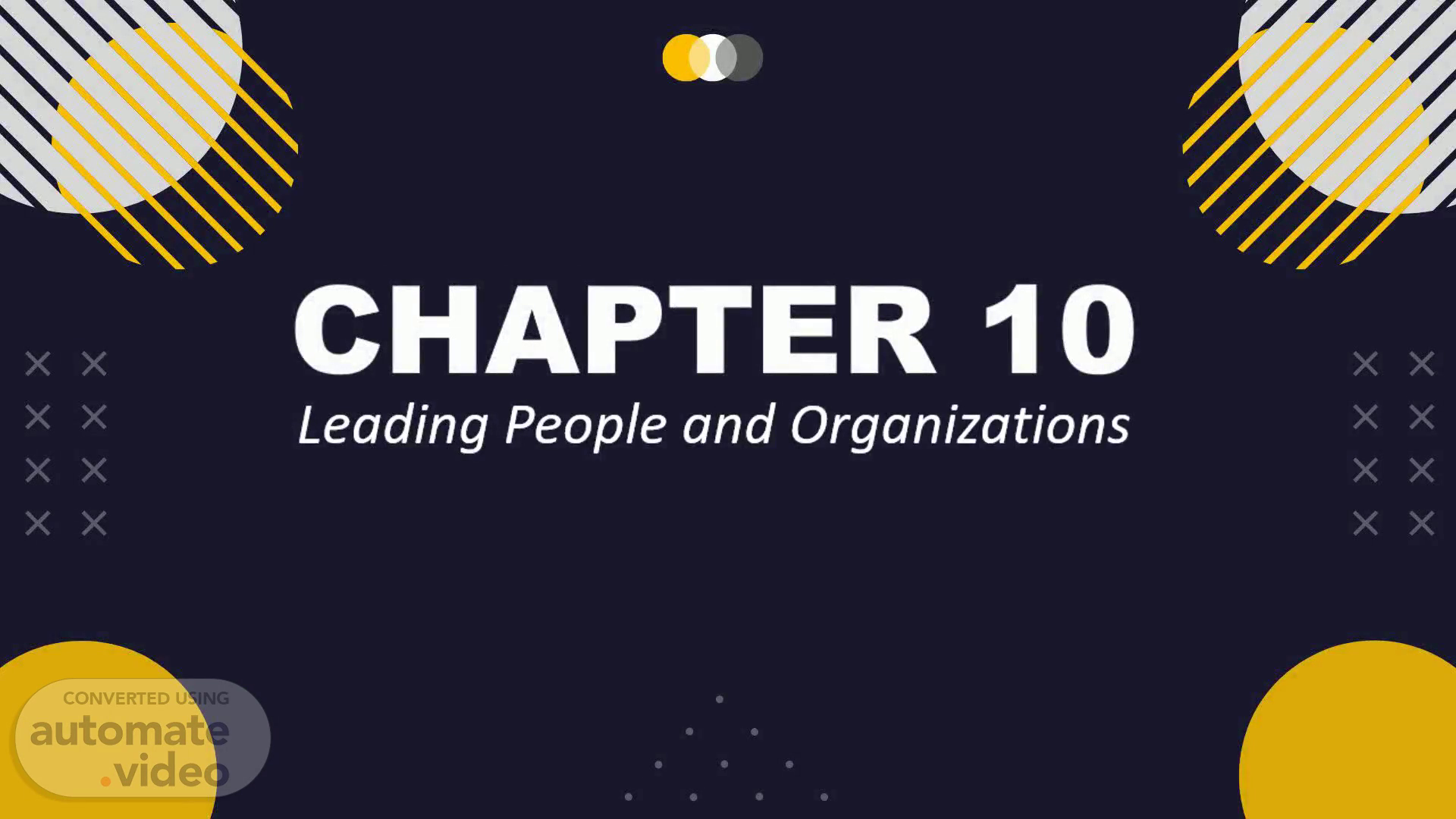Page 1 (0s)
x x x x x x x x x x x x x x. CHAPTER 10. Leading People and Organizations.
Page 2 (8s)
CHAPTER 10. Define what leadership is and identify traits of effective leaders. Identify leadership skills Learn the position of trait approaches in the history of leadership studies. Explain the traits that are associated with leadership. Discuss the limitations of trait approaches to leadership. Explain the behaviors that are associated with leadership. Identify the three alternative decision-making styles leaders use and the conditions under which they are more effective. Discuss the limitations of behavioral approaches to leadership..
Page 3 (31s)
CHAPTER 10. LEADERSHIP may be defined as the act of influencing others to work toward a goal. Leaders exist at all levels of an organization. Some leaders hold a position of authority and may use the power that comes from their position, as well as their personal power, to influence others; they are called FORMAL LEADERS . In contrast, INFORMAL LEADERS are without a formal position of authority within the organization but demonstrate leadership by influencing others through personal forms of power..
Page 4 (54s)
CHAPTER 10. L eadership is the first of five facets constituting a manager’s leading function in the P-O-L-C framework. For an effective management, leadership must be present..
Page 5 (1m 13s)
CHAPTER 10. Leaders do not rely on the use of force to influence people . Instead, people willingly adopt the leader’s goal as their own goal. If a person is relying on force and punishment, the person is a dictator, not a leader . leaders as at least partly responsible for their team’s or company’s success and failure When people and organizations fail, managers and CEOs are often viewed as responsible..
Page 6 (1m 34s)
x x x x x x x x x x x x x x. CHAPTER 10. 3 LEADERSHIP SKILLS ACCORDING TO ROBERT KATZ.
Page 8 (7m 10s)
x x x x x x x x x x x x x x. CHAPTER 10. 10.1 Who Is a Leader? Trait Approaches to Leadership.
Page 9 (7m 26s)
x x x x x x x x x x x x x x. CHAPTER 10. 10.1 Who Is a Leader? Trait Approaches to Leadership.
Page 10 (7m 35s)
x x x x x x x x x x x x x x. CHAPTER 10. 10.2 What Do Leaders Do? Behavioral Approaches to Leadership..
Page 11 (7m 52s)
x x x x x x x x x x x x x x. CHAPTER 10. 10.2 What Do Leaders Do? Behavioral Approaches to Leadership..
Page 12 (8m 7s)
x x x x x x x x x x x x x x. CHAPTER 10. 10.2 What Do Leaders Do? Behavioral Approaches to Leadership..
Page 13 (8m 17s)
x x x x x x x x x x x x x x. CHAPTER 10. 10.2 What Do Leaders Do? Behavioral Approaches to Leadership..
Page 14 (8m 43s)
x x x x x x x x x x x x x x. CHAPTER 10. 10.2 What Do Leaders Do? Behavioral Approaches to Leadership..
Page 15 (8m 49s)
inox )INVHI.
